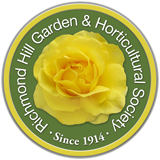Gardening TipsGardening Tips began in September 2020 as a weekly collaboration with OnRichmondHill.com. Email recommendations for future gardening tips to GardeningTipsRHGHS@gmail.com. Society members may click Add Comment following any article, and post comments such as adding more retrospective, agreeing with the contributor, or even suggesting a correction. |



